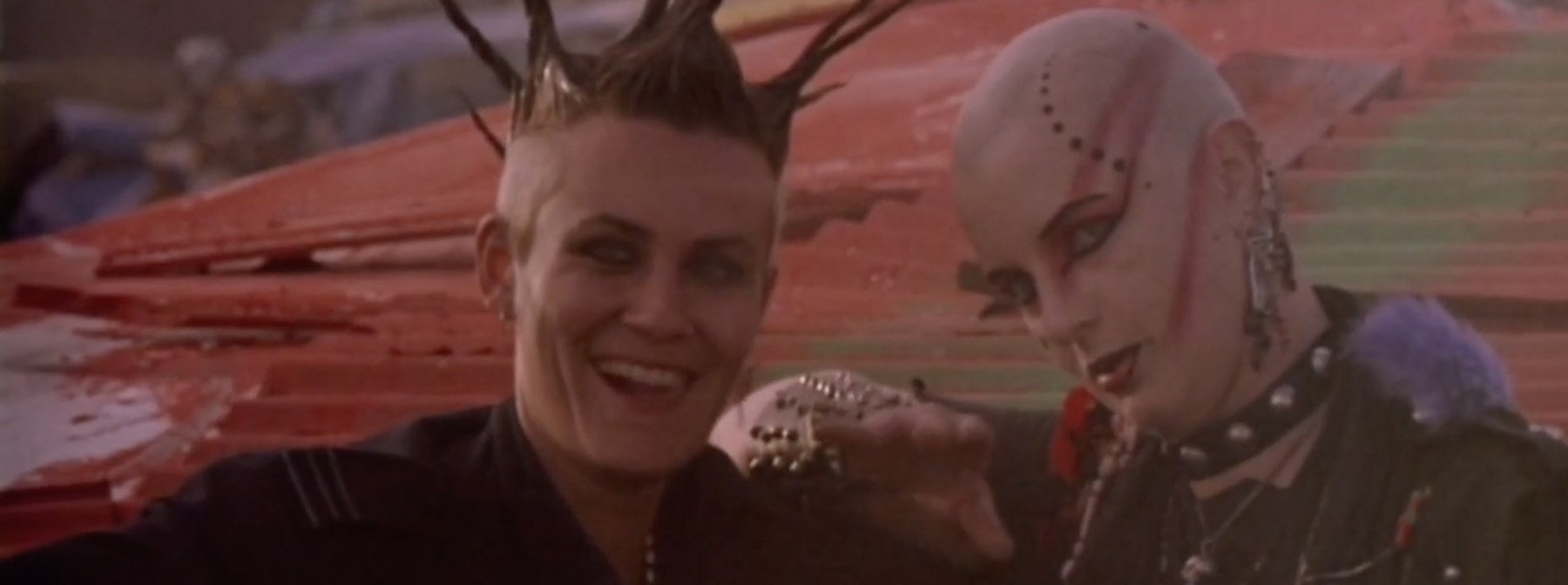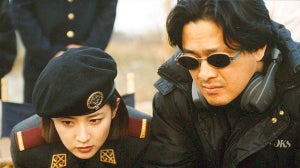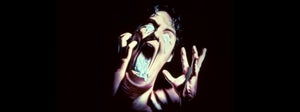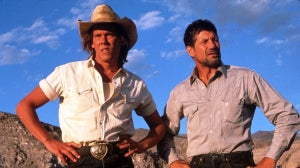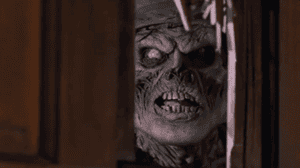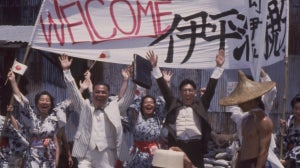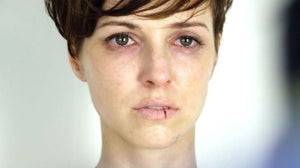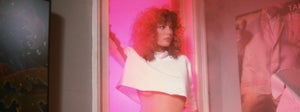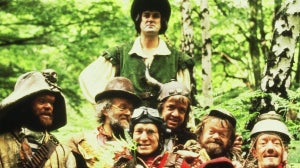
"Every film is an exploitation film", Abel Ferrara said in 1993. "Tell me one film that's not an exploitation film, one film that's made where they don't care if they get the money back”. It's a provocative quote to think about, and holds particular pertinence when it comes to the history of Australian exploitation cinema of the 1970s and 1980s in particular.
Made fast and with the motivation to make a quick dollar never disguised, the period saw an explosion of lurid, chaotic genre films that issued a direct challenge to the more highbrow films of the Australian new wave that would peak with films like Peter Weir’s Picnic at Hanging Rock (1975). But even Weir himself understood the allure of exploitation cinema, having made his extraordinary film debut the year before with the horror-comedy The Cars that Ate Paris.
With a legacy that can be felt today in the international success of films like Danny and Michael Philippou’s Talk to Me and Colin and Cameron Cairnes’s Late Night With the Devil, the spirit of this era of Australian exploitation filmmaking lives on. Here’s our quick primer on the things you know - and the things you might not - when it comes to the heyday of this vibrant strand of Australia’s cinema history.
A is for Alison’s Birthday
Flipping the script on the typical Australian horror movie logic that the city is safe and the country a menace, Ian Couglan's 1981 folk horror film Alison's Birthday imports Celtic mythology to tell its story of its eponymous teenage girl seemingly tethered to a Stonehenge worshipping death cult.
B is for Body Melt
Neo-renaissance man Philip Brophy is somewhat of a living legend in Australia, and this writer/musician/sound nerd/artist/academic famously turned his hand to filmmaking in what to this day remains one of the wildest horror films the country has ever produced.1993's Body Melt starred a slew of familiar Australian soap opera stars and put them at the centre of a gruesome, gleeful body horror film. While not exactly a hit when it was first released, it has rightly gone on to become a cult classic.
C is for Centrespread
Tony Paterson's smutty lo-fi Centrespread (1981) takes place in a dystopian future where women exist solely to pleasure men. A pornographer who specialises in sexual violence ostensibly searching for the next hot model, providing a fairly flimsy excuse for a series of sex, violence, and sexually violent vignettes. Fun fact: when shown on Australian television in the 90s, the pan-and-scan process cut off the first and last letters of the title, the movie broadcasting under the name "Entresprea".
D is for Dead End Drive-In
One of the best exploitation films ever produced in Australia by one of the best to ever make them. Brian Trenchard-Smith's Dead End Drive-In (1986) was adapted from a short story called “Crabs” written by two-time Booker Prize winning Australian author Peter Carey. But don’t let the movie’s highbrow origins fool you; this is classic exploitation film fare, a wild action film set in a dystopian future where unruly youths and other social riff-raff are condemned to life in a drive-in-turned-prison.
E is for Everett de Roche
US-born Everett De Roche would become a key player in the explosion of Australian genre films during the 1970s and 1980s. He collaborated frequently with director Richard Franklin on movies such as Patrick (1978) and Roadgames (1981), with other credits include Long Weekend (Colin Eggleston, 1978), Snapshot (Simon Wincer, 1979), Harlequin (Simon Wincer, 1980), Race for the Yankee Zephyr (David Hemmings, 1981), Razorback (Russell Mulcahy, 1984), Fortress (Arch Nicholson, 1985), and Frog Dreaming (Brian Trenchard-Smith, 1986).
F is for Fair Game
This extraordinary not-quite-rape-revenge-film starring Cassandra Delaney has to be seen to be believed as she stars as Jessica, who runs an isolated wildlife sanctuary, is terrorised by a group of local rev-heads. According to an article in Australia's now defunct Truth tabloid, the role of Jessica was originally offered to Olivia Newton-John who politely refused it.
G is for George Miller
The unchallenged daddy of Australian genre cinema, Oscar-winning filmmaker Dr George Miller is virtually synonymous with his still-unfolding Mad Max narrative universe. With the original film released in 1979, the sequel was released in the US as The Road Warrior in 1981 and amongst other things shot star Mel Gibson to international fame. Following Miller-helmed sequels included Mad Max Beyond Thunderdome (1985), Mad Max: Fury Road (2015) and the forthcoming Furiosa scheduled for a 2024 release.
H is for Howling III
While sharing little more than a name with the earlier American films in the franchise, it's hard to find a more gleeful, joyous film than Philippe Mora's Howling III. Giving the traditional werewolf film a marsupial twist, Imogen Annesley stars as Jerboa, a beautiful young werewolf who escapes family violence and runs away to the city where she falls in love, stars in a horror movie, and finds herself on the run as anti-werewolf government forces seek to eradicate her species.
I is for Inn of the Damned
While originally intended as an episode of a made-for-television horror anthology series, Terry Bourke's 1975 film Inn of the Damned combines elements of the western with horror in a period-set story set in rural Victoria. Australian-born Judith Anderson - best known for her Oscar-nominated performance as Mrs Danvers in Alfred Hitchcock's Rebecca (1940) - stars as a demented inn-keeper on a killing spree against those she holds responsible for the deaths of her children.
J is for Jacki Weaver
While largely coming to international attention for her Oscar-nominated performance in David Michôd's Animal Kingdom (2010), Weaver was already a well-established, award-winning actress in Australia by that point. Although she began acting in the early 1960s, it was a trio of bawdy Tim Burstall-directed sexploitation films - Stork (1971), Alvin Purple (1973), and Petersen (1974) - that are generally considered the place where her career was truly established.
K is for Killer Crocs
Saltwater crocodiles feature in not one but two classic Australian horror movies, taking a central role in Arch Nicholson's 1987 eco-horror film Dark Age starring John Jarratt and David Dalaithngu. The same species would also feature heavily in Greg McLean's 2007 homage to Dark Age, Rogue, which also tipped its hat to Russell Mulcahy 's Razorback.
L is for Long Weekend
John Hargreaves and Briony Behets give powerhouse performances as the troubled couple whose marriage is on the rocks in Colin Eggleston's cult favourite, the 1978 horror movie Long Weekend. Boasting the tagline "Their crime was against nature - nature found them guilty", the film famously features the killing of a dugong as a central part of its taut, suspenseful action as the couple spiral out of control. Jamie Blanks of Urban Legend (1998) and Valentine (2001) fame remade the movie in 2008 with Claudia Karvan and Jim Caviezel.
M is for The Man from Hong Kong
Brian Trenchard-Smith's debut feature The Man from Hong Kong (1975) starred martial arts legend Jimmy Wang Yu, one-time James Bond George Lazenby, and a slew of other now familiar faces including Mad Max's Hugh Keays-Byrne and Hong Kong legend Sammo Hung. An international chopsocky co-production between Hong Kong and Australia, it's best known for its wild action set pieces including a fight scene staged on top of Uluru.
N is for Nightmares
The late great John D. Lamond was the embodiment of what can be politely described as a "colourful character", launching his filmmaking career with the mondo-esque Australia After Dark (1975) and The ABC of Love and Sex: Australia Style (1978) and the sexploitation film Felicity (1979). 1980's Nightmares marked his foray into horror, a theatre-world set slasher film based on a story by Lamond and renowned Australian celebrity journalist turned disgraced right wing broadcaster John-Michael Howson.
O is for the Outback
Australian cinema loves the outback, a standard go-to setting where strange and/or scary things can happen, epitomising white colonial anxiety and consolidating Geoffrey Blainey's famous 1967 identification of "the tyranny of distance". From Wake in Fright (1971) to Greg McLean’s Wolf Creek (2005), there is no shortage of outback shot Australian horror films alone.
P is for Patrick
One of the most beloved Australian exploitation films from the 1980s, Richard Franklin’s Patrick (1978) is another Australian genre film banger. Telling the tale of the eponymous character - a murderer who develops psychokinetic abilities while in a coma - amongst its many claims to fame, it inspired the frankly bewildering 1980 unofficial Italian sequel Patrick Still Lives.
Q is for Quentin Tarantino
US indie darling and one-time enfant terrible Quentin Tarantino did not disguise his love of Australian exploitation film from this era in the 2008 hagiography Not Quite Hollywood, and has referenced films such as Fair Game in Death Proof (2007) and Patrick in Kill Bill (2003).
R is for Razorback
Bursting at the seams with surrealist imagery and bright, dayglo colours, Russell Mulcahy’s Razorback is bogan Suspiria in the best way possible, replacing ballerinas with a feral killer pig. Mulcahy’s experience during this period making music videos for bands such as Duran Duran granted him a powerful sense of what the zeitgeist deemed creatively possible, allowing him to push the feature length horror film to its stylistic limits to great success.
S is for Stunt Rock
Directed and co-written by Brian Trenchard-Smith and starring legendary Australian stuntman Grant Page as himself, the 1978 action/musical mockumentary Stunt Rock is something really special. The film follows Page as he travels to Los Angeles to shoot a television show where he joins forces with heavy metal band Sorcery and helps them develop stunts for their live show…or something. The plot takes a backseat to Page’s increasingly unhinged displays of physical daring.
T is for Tax
There's a paradox of sorts that the most outrageous period of Australian film production was tethered so closely to something as unsexy as a tax concession. Enter 10ba, which, when introduced in mid 1981, meant that investors could claim a 150% tax concession, significantly increasing the income their investments could earn them. Eager to cash in, investors flocked to Australian film production and gave the local industry a significant boost.
U is for Undies
“Panties” in the United States, “knickers” in the United Kingdom - but in Australia, they’ll always be “undies”. And there’s no lack of them on display (either on or off) in the bonanza of sexploitation films made in the 1970s, including The Naked Bunyip (John B. Murray, 1970), The Love Epidemic (Brian Trenchard-Smith, 1975), The True Story of Eskimo Nell (Richard Franklin, 1975), Plugg (Terry Bourke, 1975), Eliza Fraser (Tim Burstall, 1976), the 1973 anthology Libido, Alvin Purple, Stork, Petersen, and Felicity.
V is for Vampires
While not necessarily renowned for its output in the subgenre, the few Australian vampire films that exist really punch above their weight. Thirst (Rod Hardy, 1979) centres around a kind of blood dairy where the consumption of blood is commodified, while Outback Vampires (Colin Eggleston, 1987) combines the vampire story with the haunted house motif and gives it a distinctly Australian twist. More recently, Michael Rymer shot his 2002 cult sleeper Anne Rice adaptation Queen of the Damned in Melbourne, and Warrick Thornton and Brendan Fletcher's First Nations vampire series Firebite screened internationally on AMC+ from 2021-2022.
W is for Wake in Fright
If there is a point of origin for the contemporary Australian horror film, 1971’s Wake in Fright is surely it. Made by Canadian filmmaker Ted Kotcheff - who would go on to direct First Blood (1982) and Weekend at Bernie's (1989) - there is a widespread agreement that it took a non-Australian perspective to fully see the country in all its dark weirdness, the outback trial-by-fire of a young city schoolteacher brought to life by a cast including Gary Bond, Donald Pleasence, Jack Thompson and Australian screen icon Chips Rafferty
X is for X: Night of Vengeance
The spirit of Australian exploitation filmmaking looms large in the vibrant output of filmmaker Jon Hewitt, including 1992's vampire movie Bloodlust, his 2014 remake of Brian Trenchard-Smith's 1982 sci-fi classic Turkey Shoot, and the 2011 thriller X: Night of Vengeance.
Y is for Yobs
From the dreaded Baker brothers (Chris Hayward and David Argue) in Razorback to Neil and Colin (Sam Worthington and Damien Richardson) in Rogue, these mongrels are everywhere.
Z is for Zombies
The Australian zombie film has been quietly chugging away as one of the most enduring fantastic subgenres in the country's genre film production. Carmelo Musca and Barrie Pattison's Zombie Brigade (1988) isn't exactly a household name, but it is notable if only for its main characters being an Aboriginal man (Noongar actor John Moore) and an Asian woman (played by Singapore-born actress Khym Lam). More recent engagements with the zombie trope include Plague (Kostas Ouzas and Nick Kozakis, 2014), Cargo (Ben Howling and Yolanda Ramke, 2017), Scare Campaign (Colin and Cameron Cairnes, 2016), the Roache-Turner brothers' Wyrmwood (2014) and Wyrmwood: Apocalypse (2021), Little Monsters (Abe Forsythe, 2019), and of course the Spierig Brothers' Undead (2003), whose spectacles include amongst other things a man punching a zombie fish in the face.

